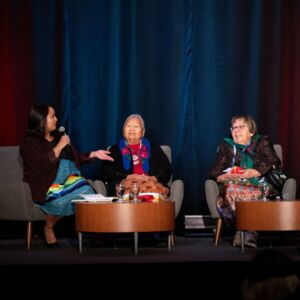by ICC Staff

In recent years, Indigenous communities have made significant strides in benefiting from foreign direct investment (FDI). Increasingly, capital intensive infrastructure projects are being financed by foreign investors who are willing and able to provide funds to Indigenous communities where domestic investors cannot.
Notably, within the mining sector, two of Manitoba’s most important mines are currently foreign-owned, with substantial benefits outflowing for Indigenous communities in the surrounding areas such as growth in employment and access to exclusive contracts, among other things.
Between 2023 and early 2025, around 40% of announced projects were majority-owned by Indigenous communities, while 22% were fully Indigenous-owned. Only about one-fifth involved minority stakes, underscoring the growing strength and intent for substantial control. Importantly, the financing for these projects is increasingly being allocated by foreigners.
Why Foreign Capital is Flowing to Indigenous Projects
In part, this can be explained by a few factors. First, global capital markets are substantially larger than the Canadian market, meaning there is more money ready to be invested outside the country’s borders than within. Second, the Canadian market is an attractive destination for FDI largely owed to the strength of its institutions as well as critical resources such as minerals.
Indigenous communities can benefit immensely from greater FDI, as foreigners often have interest in Indigenous markets where domestic investors do not; moreover, the sheer availability of capital in foreign markets is substantially larger than what can be sourced domestically. FDI, as such, can help fill the investment gap left by the domestic market.
Balancing Investment Opportunities with Economic Sovereignty
It is important, however, to note that while FDI can play an important role in financing Indigenous-led infrastructure projects, being mindful of the potential drawbacks is crucial. Indigenous economic sovereignty is at the forefront of economic reconciliation, many foreign entities may either be unfamiliar with such principles or uninterested.
For these reasons, it is important that the appropriate institutions and resources be established to ensure sound investment practices. Strong governance frameworks and transparent partnerships are essential to making sure foreign capital supports Indigenous economic sovereignty rather than undermining it.
The Infrastructure for Indigenous-Led Investment
Encouragingly, support mechanisms are growing. The federal Indigenous Loan Guarantee Program, backed by C$5 billion, helps communities secure financing for equity ownership in major resource and energy projects. Similarly, the Canada Infrastructure Bank’s Indigenous Equity Initiative provides loans of C$5–100 million for projects in clean power, broadband, and transit. These tools lower barriers to investment while ensuring Indigenous groups retain meaningful stakes.
Private-sector innovation is also playing a role. Cedar Leaf Capital, launched with First Nations shareholders, is set to become Canada’s first Indigenous-owned investment dealer, expanding access to capital markets and advisory services. At the same time, communities are tapping into debt markets more directly, with over 100 Indigenous groups announcing equity investments through bonds or private placements between 2022 and 2024.
Together, these initiatives show that foreign investment is no longer something imposed on Indigenous communities but increasingly shaped by them. With the right safeguards, FDI can accelerate prosperity while respecting self-determination, turning capital flows into a pathway for reconciliation and long-term growth.
Join Our Newsletter
As Manitoba's voice for Indigenous business and your partner in economic reconciliation, we connect you to opportunities that drive change. Subscribe to receive updates on Indigenous business developments, partnership opportunities, and upcoming events delivered straight to your inbox.



